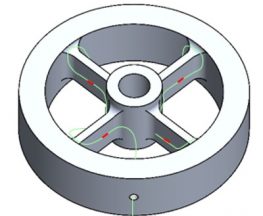AI for Infrastructure
Our research puts physics first in developing trustworthy AI for infrastructure. We focus on creating the next generation of digital twins for underground assets by fusing physics-informed learning, computer vision, multimodal sensing, and multi-scale simulation. Our work spans particle-scale imaging and ground modelling through to asset-level inspection, early warning, and lifecycle management. Core areas include physics-informed neural networks/operators, data-efficient learning, computer vision, 3D point cloud and GPR analysis. Applications include tunnelling, basements, shafts, deep excavations, mining, deep foundations, and highway infrastructure. The overarching aim is to transform the productivity, resilience, and sustainability of underground infrastructure construction and maintenance.
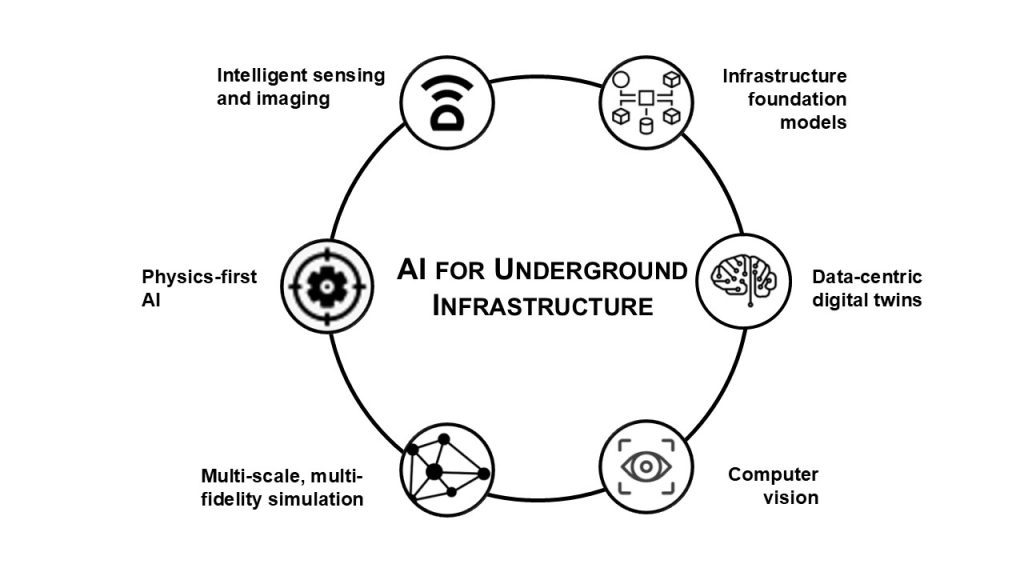
Current Research Projects
AI for Ground Penetrating Radar
Student: Haibing Wu
This work introduces physics-informed deep learning, synthetic data simulators and novel computer vision techniques method to unify ground penetrating radar (GPR) data across diverse source waveforms. This enables deep learning models trained on one waveform to generalize zero-shot to unseen waveforms, overcoming one of the major bottlenecks for building GPR foundation models. The approach provides a data-efficient pathway toward scalable, physics-informed foundation models for subsurface imaging
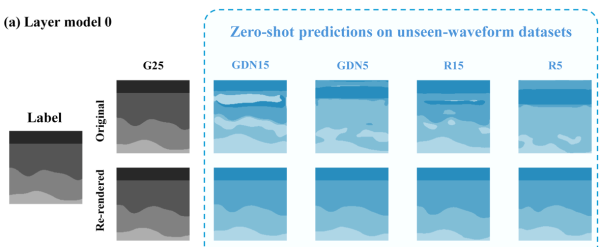
Generalisable AI for Intelligent Robotics
Postdocs: Guangming Wang and Yixiong Jing
This work explores the use of synthetic simulators and domain adaptation to advance structural health monitoring (SHM) of tunnels. High-fidelity simulators are used to generate large-scale synthetic datasets of tunnel point clouds and defect scenarios, providing abundant and controllable training data for machine learning models. To bridge the gap between synthetic and real-world conditions, domain adaptation techniques are applied, enabling models trained on synthetic data to generalise effectively to noisy, incomplete, or variable-quality field measurements. This physics-informed, data-centric approach provides a scalable pathway for reliable tunnel inspection and anomaly detection, reducing dependence on expensive labelled datasets while improving the robustness of SHM systems in real underground environments.
Agentic AI for Point Cloud Analysis
Student: Tao Xinghui
This work pioneers the use of agentic AI for tunnel point cloud analysis. The proposed framework (R4Tun) reformulates tunnel segmentation as a multi-agent reasoning system. Large language models (LLMs) with chain-of-thought prompting, domain knowledge retrieval, tool use, and self-reflection are embedded as agents that adapt parameters, generate code, and iteratively improve results. Unlike traditional supervised or foundation-model pipelines, R4Tun reduces dependence on expert tuning and produces interpretable reasoning traces. Tested on the Seg2Tunnel benchmark, it demonstrates improved generalisation across varied tunnel geometries and emergent self-reflective behaviours. The approach represents a paradigm shift where AI agents not only replicate but also augment expert workflows, opening pathways to adaptive, interpretable, and insight-generating structural health monitoring.

Synthetic Simulators and Domain Adaptation for Tunnel SHM
Student: Wanru Yang
This work explores the use of synthetic simulators and domain adaptation to advance structural health monitoring (SHM) of tunnels. High-fidelity simulators are used to generate large-scale synthetic datasets of tunnel point clouds and defect scenarios, providing abundant and controllable training data for machine learning models. To bridge the gap between synthetic and real-world conditions, domain adaptation techniques are applied, enabling models trained on synthetic data to generalise effectively to noisy, incomplete, or variable-quality field measurements. This physics-informed, data-centric approach provides a scalable pathway for reliable tunnel inspection and anomaly detection, reducing dependence on expensive labelled datasets while improving the robustness of SHM systems in real underground environments.

Diffusion Models for Infrastructure
Postdoc: Yixiong Jing
InfraDiffusion introduces a zero-shot framework for enhancing masonry point clouds. The method projects sparse and noisy LiDAR scans into depth maps using virtual camera projection and restores them with an adapted diffusion-based model (DDNM) enhanced by boundary masking. This produces clean, geometrically consistent depth maps without task-specific training or ground-truth supervision. By coupling these restored maps with the Segment Anything Model (SAM), InfraDiffusion significantly improves brick-level segmentation in tunnels and bridges. The approach addresses the challenges of fine-grained masonry inspection in low-light or data-sparse environments and opens new pathways for scalable, automated structural health monitoring.
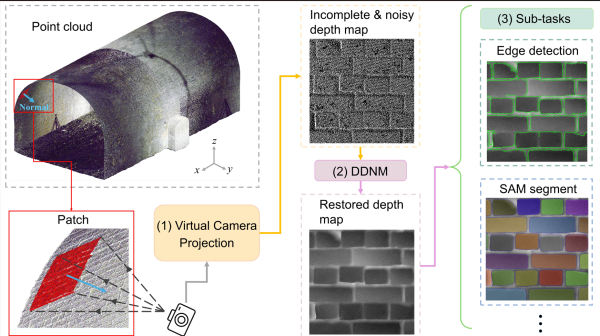
Physics-Informed Machine Learning for Deep Excavations
Student: Nandeesh Babanagar
Advanced 3D modelling and live site monitoring are common for urban basement construction, yet they remain largely disconnected. The absence of feedback between monitored behaviour and design models currently limits optimisation during construction. This challenge is particularly critical as the industry increasingly seeks to reuse old inner-city foundations, where monitored performance is essential both (a) to justify reuse and (b) to inform new superstructure design.
This project will, for the first time, develop physics-informed machine learning (PIML) digital twins for basements to enable design and construction optimisation. By embedding soil–structure mechanics within data-driven models, the digital twin will autonomously link 3D design models, structural analyses (e.g. finite element models) and state-of-the-art real-time monitoring. Monitored data will be assimilated “on-the-fly” through PIML to continually update and refine the design process, while lifetime behavioural records will be stored in the digital twin to support future foundation reuse. The full workflow will be validated on a live basement construction project in the UK.
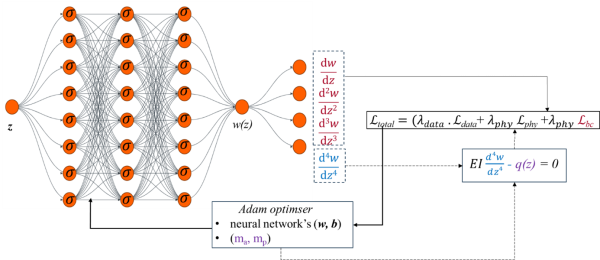
Physics-Informed Machine Learning for Microtunnelling
Student: Malachi Philipson
This research explores how data-driven approaches, when combined with mechanistic or physics-based models, can improve predictions of soil–structure interaction, construction performance, and infrastructure resilience. Traditional empirical or purely numerical models often fall short due to limited accuracy, sensitivity to input assumptions, or a lack of generalisability across sites. By incorporating machine learning with physical constraints, we aim to create predictive models that are both more reliable with small datasets and more interpretable in real-world engineering contexts.
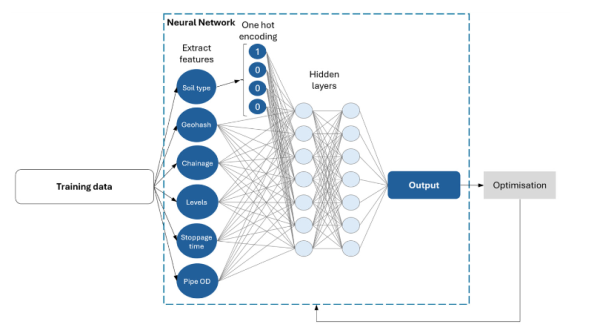
Trustworthy Digital Twins
Postdoc: Linjun Lu
This project is aiming to develop robust methods and frameworks to measure, ensure, and enhance the trustworthiness and ethical integrity of digital twins applied to highway infrastructure, facilitating safer, more reliable, and ethically responsible management of road networks.
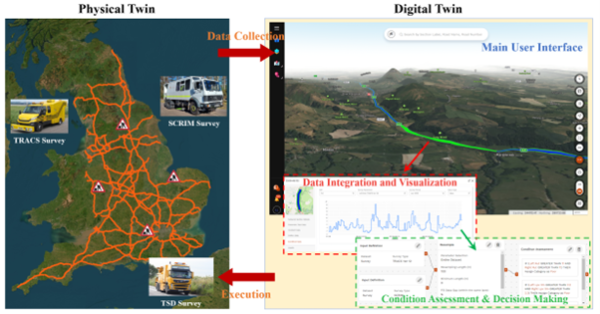
Digital twins for as-built shield tunnels
Student: Mr Wei Lin
Deformation and defects in as-built shield tunnels present significant challenges for tunnel managers and engineers, particularly in urban environments. Determining the current mechanical status (e.g. stress level) of shield tunnels becomes critical to guide repair and reinforcement strategies. However, existing evaluation and analysis methods either lack precision or are prohibitively costly. The development of BIM and AI have brought promising opportunities for automatic and digital evaluation and analysis of existing tunnels. The objective of this work is to achieve automatic mechanical evaluation and analysis of as-built shield tunnels using digital twins by combining laser scanning, AI algorithms, BIM and finite element analysis.
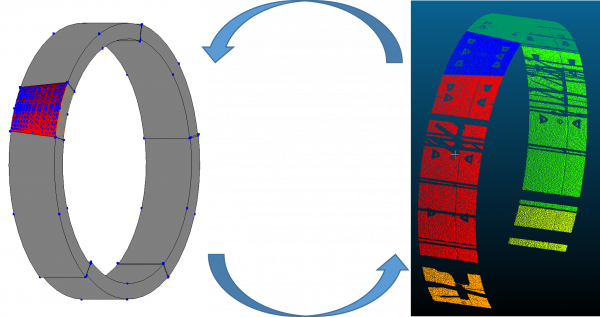
Monitoring deep excavation construction
Student: Mr Pete Hensman
Industry sponsor: Ward and Burke Construction Ltd
This research aims to improve understanding of soil-structure interaction applied to deep bunkers for the construction of energy-from-waste facilities. This will be achieved through the use of real-time site monitoring and complementary finite element modelling. Data acquired from the field monitoring will be used to calibrate and verify the developed numerical models, whilst also creating a database for the development of simplified empirical methods. This field data can also be used to develop a system which provides real time feedback to site personnel, actively informing the construction process, and promoting a proactive approach to risk management and mitigation.
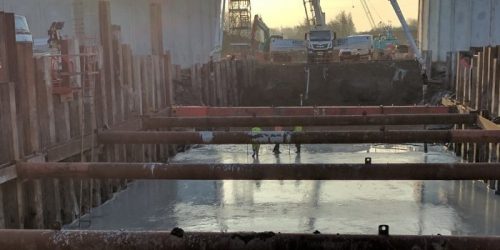
Design & performance of pipe-jacked tunnel drives
Student: Mr Bryn Phillips
Industry sponsor: Ward and Burke Construction Ltd
Microtunnelling is an increasingly popular means of trenchless installation for tunnels of between 600 mm and 3500 mm internal diameter and drive lengths of less than 1500m (typically). One of the greatest risks in long-drive microtunnelling is the development of excessive soil-structure penetration resistances, to the point where they exceed the total available jacking thrust. This project seeks to address this shortcoming through the development and monitoring of instrumented ‘smart’ tunnel pipes as well as bespoke reduced-scale tunnel-soil interface testing in the laboratory.
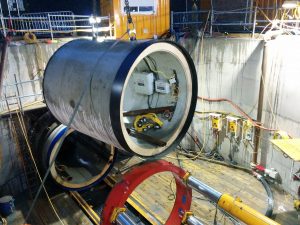
Satellite-enabled early warning system for geotechnical structures
Student: Ms Maral Bayaraa
Sponsor: Royal Commission for the Exhibition of 1851
Industry sponsor: Satellite Applications Catapult
From hundreds of km in space, satellite-Interferometric Synthetic-Aperture Radar (InSAR) analysis allow detection of ground motion to a high level of precision. However, complexities in converting the raw data to actionable information has so far limited authorities’ ability to practically monitor these structures from space. To help solve this, this research is creating a framework for geotechnical validation of the satellite measurements by developing 3D numerical models capable of simulating the underpinning mechanics of the observed soil movements. Deep learning experiments will be used to create an end-to-end scalable early warning tool, tested on historical failures and other geotechnical applications. The research will be focused on tailings dams and deep excavations.
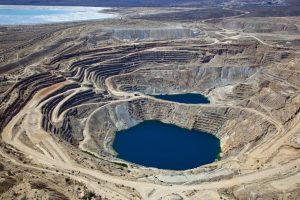
Damage detection for critical infrastructure using computer vision & deep learning
Student: Yixiong Jing
PI: Professor Sinan Acikgoz
Ageing infrastructure places a higher demand on both the frequency and scale of inspections. These inspections are time-consuming, costly and are prone to human error. This project seeks to develop an automated, flexible, accurate and efficient process to identify existing damage in critical infrastructure. This will be achieved using a combination of state-of the art computer vision and deep learning techniques.

Behaviour of construction support fluids
Students: Mr Daniel McNamara, Mr Bryn Phillips, Ms Alicia Leong, Mr Diarmid Xu
Sponsors: Ward and Burke Construction Ltd (bentonite support fluids), EPSRC and Arup (polymer support fluids)
Bentonite- and polymer-based support fluids are widely used in the construction industry to provide temporary hydraulic support to unstable ground, for example in tunnelling works, caisson sinking and deep excavations. Whilst most civil engineering designs must account for the performance of support fluids during construction, they often do so in an ad hoc manner, relying primarily on the development of empiricism from accumulated field experience. This research will result in new design rules and testing techniques for construction support fluids, with significant benefits for the construction industry in terms of risk, material use, and time to construct. These objectives will be achieved through fieldwork, laboratory testing and theoretical analysis.
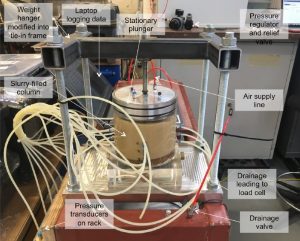
Design method updating using Bayesian machine learning
Sponsor: Royal Academy of Engineering, EPSRC
While significant advances have been made in prediction modelling, uncertainty surrounding the assessment of geotechnical parameters and underground conditions (e.g. karst caverns, faults,coal veins) remains the main barrier to accurate prediction of construction behaviour. Back-analysis of soil parameters within an observational framework has been applied widely for geotechnical applications such as slope stability, pile capacity and braced excavations. This study presents a Bayesian approach to update uncertain model parameters to inform rational strategies for optimising construction operations using the latest monitoring data acquired during the project. The proposed framework is applied to pipe jacking and caisson construction.
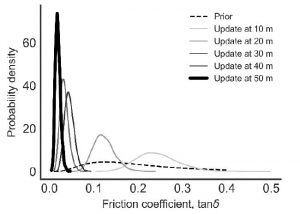
Anomaly detection for microtunnelling
Sponsor: Royal Academy of Engineering, EPSRC
The proliferation of data collected by modern tunnel boring machines presents a substantial opportunity for the application of data-driven anomaly detection (AD) techniques that can adapt dynamically to site specific conditions. Based on jacking forces measured during microtunnelling, this research explores the potential for AD methods to provide more accurate and robust detection of incipient faults. A selection of the most popular AD methods proposed in the literature, comprising both clustering- and regression-based techniques, are considered.

3D ground modelling for tunnelling using probabilistic machine learning
Collaborator: Dr Stephen Suryasentana (University of Strathclyde)
An effective site investigation (SI) campaign is critical for establishing the ground parameters for tunnel design. Optimal SI planning and interpretation is therefore an important element for the future progress of cost-effective underground infrastructure. However, choosing the appropriate SI campaign (number of tests, test locations etc.) to minimise ground-related risk and uncertainty is challenging, as there is a lack of guidance in the design codes for SI planning. Therefore, the SI campaign is usually planned heuristically using ad-hoc engineering judgment. Given the large-scale nature of SI campaigns for some underground infrastructure projects, such as HS2 and the Thames Tideway Tunnel, considerable savings can be realised if a more optimal, automated and adaptive approach is adopted. This project will address these limitations through the integration of state-of-the-art probabilistic machine learning (ML) into the planning process of SI campaigns for tunnelling.
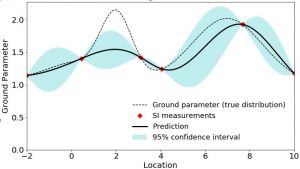
Laboratory testing of construction-induced settlements surrounding caisson shafts
Student: Mr Matthew Willoughby
There is very little guidance in the published literature relating to the soil settlements induced by the construction of large-diameter caisson shafts. This is particularly problematic if these shafts are to be located in close proximity to existing infrastructure. This research involves the development of a new apparatus to investigate the settlement induced by the construction of large-diameter caisson shafts at model scale. Construction-induced soil settlements are measured using soil imaging techniques. The laboratory measurements are being used to inform the development of new empirical design rules and numerical models
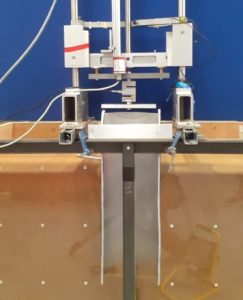
Design & development of smart fibre optic force sensors
Students: Ms Irinka Lamiquiz-Pratt, Mr Jack Templeman
Sponsor: Royal Academy of Engineering
Existing sensor designs use increasingly more complex structures and strain sensing arrangements to measure specific force combinations (e.g. axial force, shear force) independent of temperature effects. This increases sensor cost as well as manufacture and calibration time. This work aims to deliver a step change in force sensor design, manufacture, and operation by fusing state-of-the art fibre optic strain sensing with artificial intelligence techniques.
